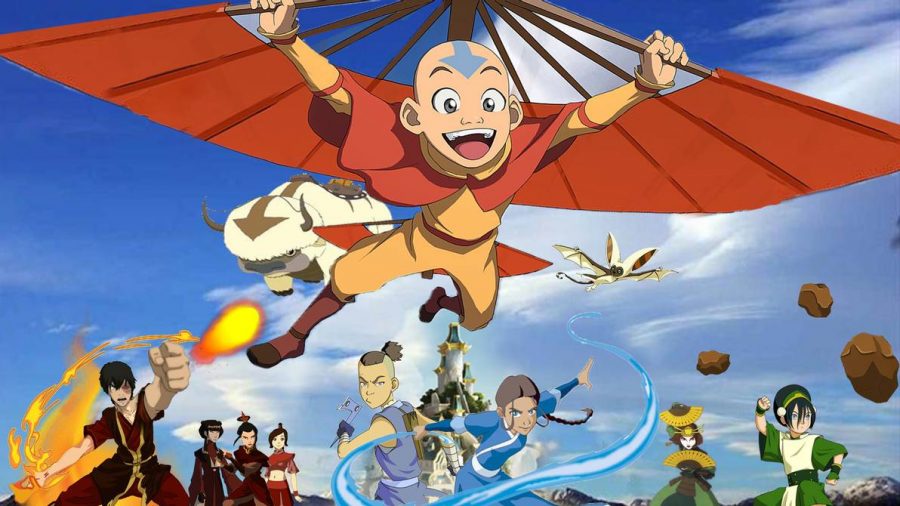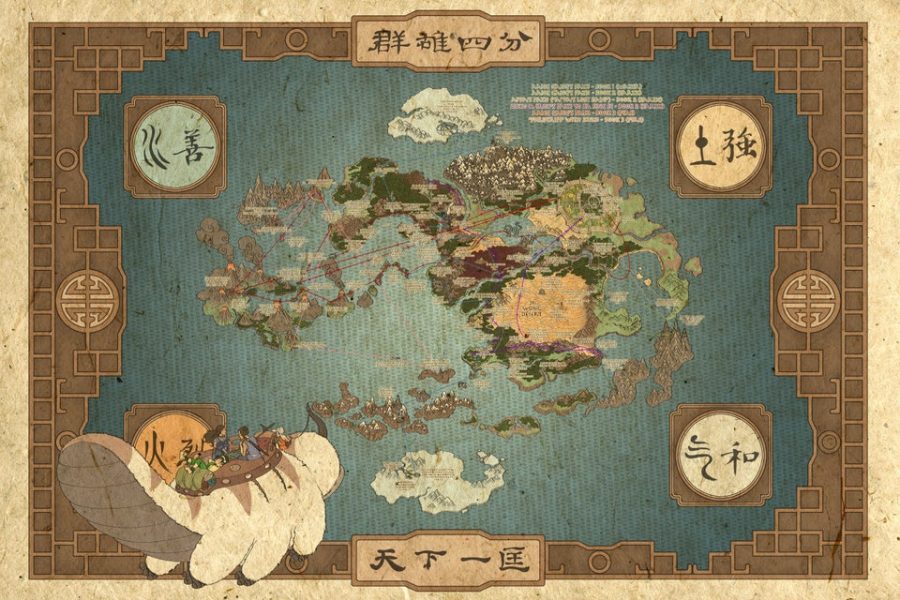The Worldbuilding of Avatar: The Last Airbender
[Disclaimer: Very light spoilers for Avatar: the Last Airbender ahead.]
Avatar: The Last Airbender is, in a word, unique. The show, which aired on Nickelodeon from 2005 to 2008, is like no other kid’s program I’ve seen. It features stunning action scenes, multi-layered characters, and some surprisingly deep subject matter. Where the show shines most, though, is in creating a universe that is simple enough for younger viewers to understand, yet complex enough to hold the interest of adults. See, most fantasy worlds fall within two categories. The first is one that goes into exhaustive, sometimes ridiculous detail about characters, settings, and events (e.g. Lord of the Rings). The other kind doesn’t really pay attention to specifics (such as scale and timeline), and often feels inconsistent because of it. Avatar manages to utilize the strengths of both these categories while avoiding their pitfalls. The show is not only a narrative masterpiece, but a triumph of worldbuilding.
The Basics
Avatar takes place in a fictional world split into four nations: the Earth Kingdom, Water Tribes, Fire Nation, and Air Nomads. Within these states live people called “benders,” who have the ability to, as their name suggests, “bend” one of the four elements (earth, water, fire, or air) without physically touching it. However, one person, called the Avatar, can bend all four elements. The Avatar’s job is to ensure the four elements (and their respective nations) remain in balance. However, in the show’s timeline, the Avatar has been missing for a hundred years and the Fire Nation launched a campaign of world conquest, eliminating the Air Nomads and waging war against the Earth Kingdom and Water Tribes. The series begins with sister and brother Katara and Sokka discovering a young airbender named Aang trapped in an iceberg. The siblings soon discover that Aang is the long-lost Avatar, and that he must defeat the nefarious leader of the Fire Nation, Lord Ozai, in order to restore balance to the world. While this quest is certainly ever-present in the show’s narrative, Avatar by-and-large follows an “adventure-of-the-week” format, with most episodes following the protagonists as they explore a new area and solve a self-contained dilemma. This structure allows for the world to be expanded in a way that feels natural, showcasing one of the show’s greatest strengths:
Show, Don’t Tell
A common pitfall of fantasy writers is the tendency to dump large chunks of information at once, interrupting the plot and boring the audience. Avatar avoids this by letting the main characters and viewers discover the world at the same time. For example, instead of the show simply telling us that there is resistance to Fire Nation rule, our protagonists actually meet a group of Earth Kingdom rebels. Similarly, the series takes what very well could have been dry exposition and fuses it with the main story arc, making every explanation feel crucial to the plot. Case in point: the show’s exploration of chakras—the spiritual energies within the body. In an episode in Book 3, Aang needs to unlock all seven chakras in order to gain the power to defeat Ozai. This arc reveals an important aspect of the show’s world while simultaneously advancing the plot. What could’ve been a distraction is made engaging by tying it back to events we are invested in. Moments like these keep Avatar moving forward at a brisk speed, with very few episodes feeling like filler. However, not all of the show’s near-perfect pacing can be attributed to effective exposition, which leads me into the next reason Avatar‘s worldbuilding is so great:
Large-Scale Storytelling
Part of the reason Avatar never gets boring is its large and diverse world. Almost every episode finds “Team Avatar” in a new, exciting location. From ice cities to massive deserts, spooky swamps to volcanic archipelagos, the show’s setting is always visually striking. However, beauty alone does not a rich world make, and the team behind Avatar knows this. The series’ writers go to painstaking lengths to make sure every environment we encounter feels lived-in. The locals of an area are not simply there to fill up background space; they form an essential (and often hilarious) aspect of the show’s narrative. For example, in an episode where our heroes must help two rival Earth Kingdom clans navigate their way through a huge canyon, the clan members are put into center stage. In learning why the clans hate each other, we gain valuable knowledge into the geography, customs, and politics of the region. In a similar vein, Avatar is genius in the way it reveals changes within the world. On the rare occasion our protagonists return to a location from earlier in the series, it is often completely different from the last time we saw it! A litmus test I often use to determine the merit of a fantasy world is to imagine it outside the context of the narrative. Avatar passes this test with flying colors due to its depth and dynamism. Even without its main storyline, the world of Avatar would still feel complete and believable. This is not the only reason the show feels so cohesive, however. . .
Consistency is Key
Don’t get me wrong, I really enjoy Star Wars. However, there are many things in the franchise that make absolutely no sense. Why does each planet seem to have only one city on it? Why are Force powers wildly inconsistent throughout each movie? I’m the kind of person that dwells on questions like these to the point where they dent my enjoyment of what I’m watching. Avatar, however, has not really given me any such questions. The universe feels remarkably consistent, leaving few observable plot holes. The world is neither too big as to be convoluted, nor too small where it feels creatively limited. While characters’ bending abilities evolve throughout the series, it is always done in a natural way, eschewing large, implausible jumps in skill in favor of steady progression. Despite taking place in a fantasy world, Avatar‘s technology mimics real-life civilizations. The series is set in a time period roughly equivalent to our nineteenth century. While the Fire Nation has used firebending to rapidly industrialize (in the mold of the European and Japanese empires), the other three kingdoms still mostly rely on medieval technology. Besides being really interesting story-wise, this disparity sufficiently explains the Fire Nation’s dominance. The amount of effort put into the series is incredible, and it shows in a world that deftly balances logic with a sense of adventure.
Not only does Avatar: the Last Airbender tell a heartwarming story, it also showcases one most well-designed fantasy worlds I have ever encountered. I highly recommend it for audiences of all ages, and I hope this article allows those who have already seen the show appreciate it in a different light. I personally look forward to reading the Avatar comics and watching its sequel series, The Legend of Korra.

